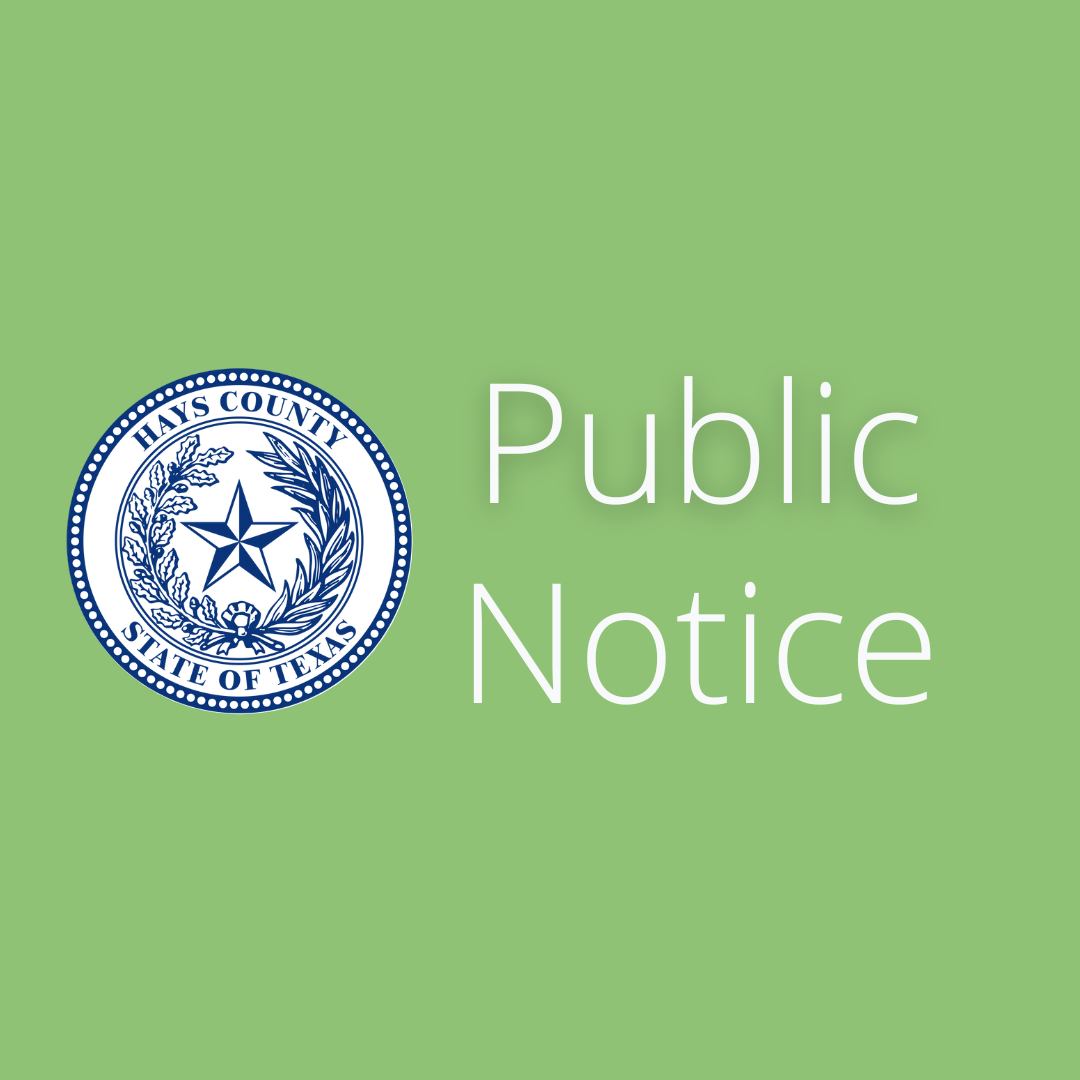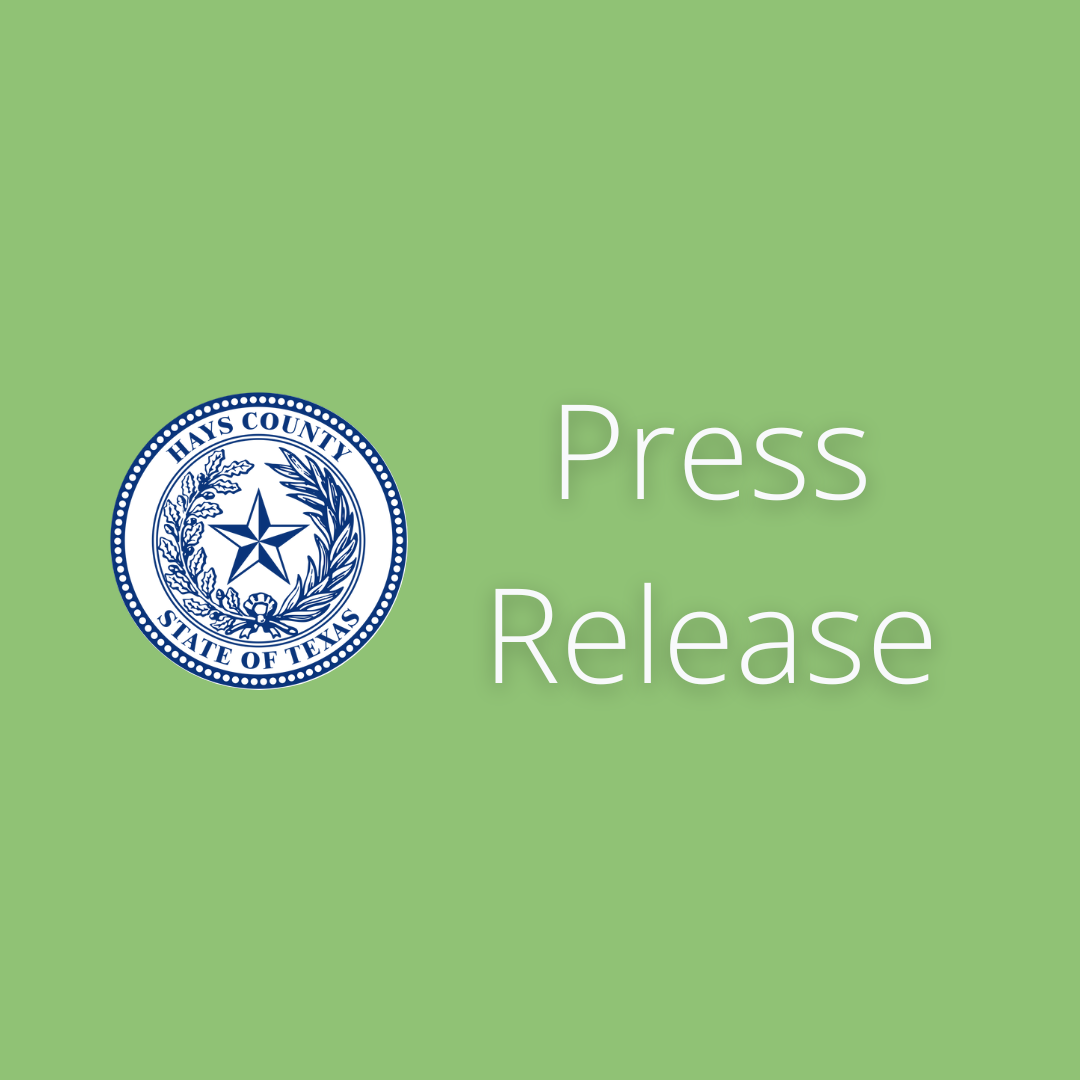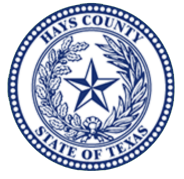By Natalie Frels
•
March 28, 2025
To view the original notice, click here. To: All interested Agencies Groups and Individuals Date of publication: March 28th, 2025 This is to give notice that the Texas General Land Office (GLO) will conduct an evaluation as required by Executive Order 11990 and Executive Order 11988, in accordance with HUD regulations at 24 CFR 55.20 in Subpart C Procedures for Making Determinations on Floodplain Management and Protection of Wetlands to determine the potential effect that Hays County single family disaster recovery Homeowner Reimbursement Program (HRP) and Homeowner Assistance Program (HAP) actions in wetlands and surrounding Federal Flood Risk Management Standard (FFRMS) floodplains will have on the human environment. The GLO was allocated HUD funding to help address unmet housing needs as a result of the 2024 Texas severe storms and flooding, including Hurricane Beryl (Beryl). On May 15, 2024, a request was declared for a major disaster due to severe storms, straight-line winds, tornadoes, and flooding beginning on April 26, 2024, and continued for several weeks. From July 5 to July 9, 2024, Beryl caused extensive wind damage, flooding, and power outages across multiple regions, particularly along the Texas Gulf Coast and inland communities. Wind gusts exceeding 90 mph and rainfall totals surpassing 15 inches in some areas led to significant damage to homes, infrastructure, and businesses. The State of Texas Community Development Block Grant Disaster Recovery (CDBG-DR) will fund two residential housing programs for eligible county residents whose homes sustained damage from the 2024 disasters. The HAP provides funding primarily for low-to-moderate-income homeowners with direct construction support for storm-impacted owner-occupied single-family residential housing. The activities covered by this program include demolition, rehabilitation, reconstruction, manufactured house replacement, or new construction and their associated elevation, mitigation, utility, site improvements, and relocation assistance, as needed. The HRP provides funding for low to moderate-income owner-occupied single-family housing (including manufactured housing). It allows homeowners to be reimbursed for certain out-of-pocket expenses including Small Business Administration disaster home loans, incurred for repairs to their dwelling including elevation, wells and septic needs, reconstruction, rehabilitation, manufactured house replacement, and mitigation. The size of the proposed site, proposed number of units, and project footprint are not currently known, however, as specific sites are identified, they will be assessed for potential impacts related to land use, floodplains, and wetlands. Mitigation measures will be applied as necessary to minimize adverse effects. Within Hays County, Federal Emergency Management Agency (FEMA) effective maps include 26,763 acres (6.2%) in the 100-year floodplain Special Flood Hazard Area (SFHA) Zones A/AE/AO, 11,808 acres (2.7%) in the regulatory floodway, and 0 acres (0%) within the Coastal High Hazard Areas Zone V/VE. Zone X encompasses 5,689 acres (1.3%) of Hays County within the 500-year floodplain and 388,631 acres (89.9%) of Hays County outside all SFHA-designated floodplains. Approximately 7,052 acres (1.6%) within Hays County are designated as wetlands. This includes freshwater emergent wetlands, freshwater forested/shrub wetlands, freshwater ponds, lakes, and riverine wetlands. The extent of the FFRMS floodplain will be determined at a site-specific level using the 0.2 percent flood approach (0.2PFA) or the freeboard value approach (FVA) when appropriate. In addition, siting within the Limit of Moderate Wave Action (LiMWA)/Coastal A Zone will be determined at the site-specific level. Activities within the LiMWA will carry the same mitigation and protection strategy as siting within a coastal high-hazard area (Zone V/VE). The floodplains and wetlands within Hays County serve important environmental functions that contribute to the county’s ecological health and community resilience. These areas provide floodwater storage and conveyance, helping to absorb and slow floodwaters, which reduces downstream flooding and protects nearby properties and infrastructure. Additionally, they support groundwater recharge and discharge, maintaining local water supplies and sustaining the base flow of rivers and streams. The natural vegetation within these floodplains and wetlands also plays a key role in erosion control, stabilizing soils, and preventing sedimentation in waterways. Furthermore, these areas contribute to water quality maintenance by filtering pollutants and sediments, ultimately improving both human and ecological health. In inland counties, they help regulate watershed health, agricultural water retention, and riparian connectivity, ensuring the stability of local water systems and ecosystems. Beyond their ecological significance, these floodplains and wetlands hold intrinsic values that benefit the community. They provide recreational opportunities such as hiking, fishing, birdwatching, and kayaking, contributing to tourism and outdoor enjoyment. These areas also serve as educational and scientific resources, offering opportunities for research and environmental education on hydrology, ecology, and resilience. There are three primary purposes for this notice. First, people who may be affected by activities in the FFRMS floodplain and wetland and those who have an interest in the protection of the natural environment should be given an opportunity to express their concerns and provide information about these areas. Commenters are encouraged to offer alternative sites outside of the FFRMS floodplain and wetland, alternative methods to serve the same project purpose, and methods to minimize and mitigate project impacts on the FFRMS floodplain and wetland. Second, an adequate public notice program can be an important public educational tool. The dissemination of information and request for public comment about the FFRMS floodplain and wetland can facilitate and enhance Federal efforts to reduce the risks and impacts associated with the occupancy and modification of these special areas. Third, as a matter of fairness, when the Federal government determines it will participate in actions taking place in the FFRMS floodplain and wetland, it must inform those who may be put at greater or continued risk. Written comments must be received by GLO at the following address on or before April 14th, 2025: Texas General Land Office ATTN: David Camarena, Director Community Development & Revitalization (CDR) Division PO Box 12873, Austin TX 78711-2873 A full description of the project may also be reviewed from 9 A.M. to 5 P.M on weekdays at the address above. Comments may also be submitted via email at env.reviews@recovery.texas.gov.











